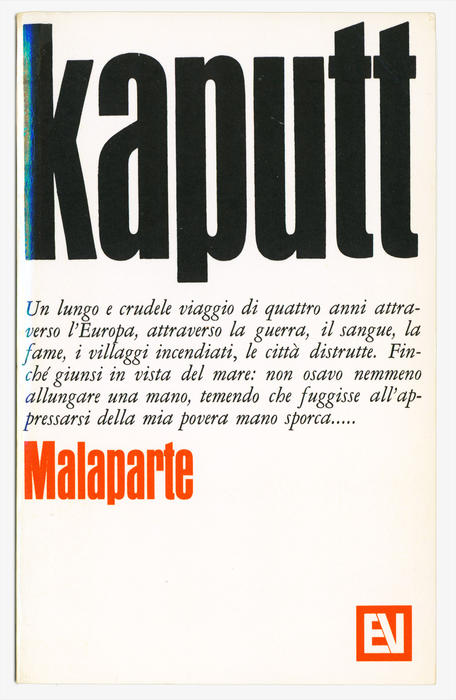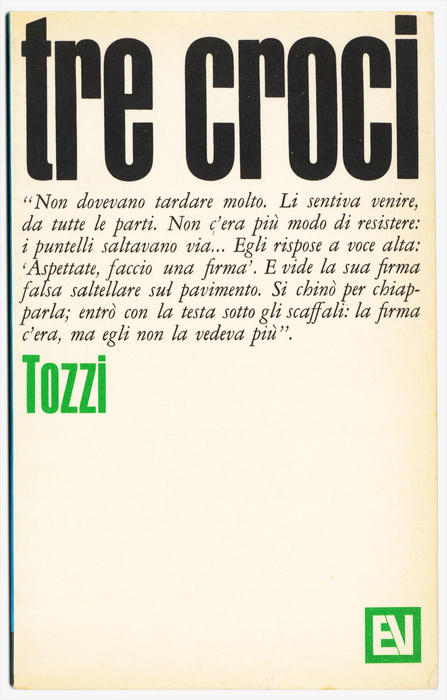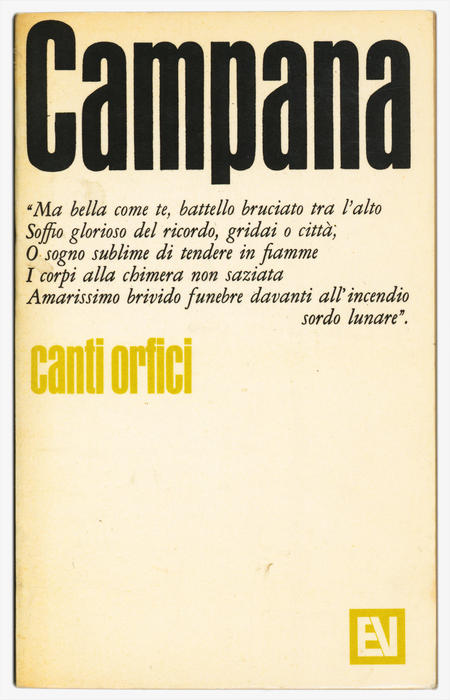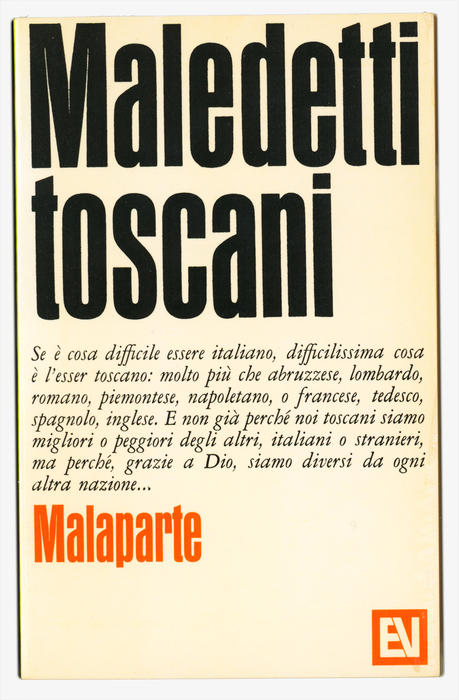Economica Vallecchi
Bob Noorda, 1965
Part of Sezione Tascabili
The "universal of current affairs", inaugurated in 1964 with "Vita di Dante" by Piero Bargellini, already entirely under the direction of Geno Pampaloni on behalf of the Montecatini company, aims to publish "the most vivid texts from more than fifty years of tradition of the publishing house, and the books suggested by the news to the attention of our time ". The series continued until 1971, with a catalog of a few dozen volumes.
Bob Noorda probably arrived at Vallecchi from Montecatini, for which he was taking care of the identity and the exhibition pavilions together with Franco Albini since the beginning of the 1950s. The restructuring of the entire catalog took place in stages, and until at least 1964 old-style covers coexisted with the new ones designed by Noorda. Economica Vallecchi, however, begins with a different structure: the first editions of the series had a cover with a photo, even though they already use the same typefaces and the same “EV” logo as the subsequent prints. “La Pelle” by Curzio Malaparte, fifth issue in the series, is the first of a long series to feature an entirely typographic cover. Even afterwards, exceptions to the precision of the project of the series can be found, perhaps for commercial reasons. “Papa Giovanni” by Ernesto Balducci features an entirely red cover with black texts. "Il mare non bagna Napoli" by Anna Maria Ortese, "Modigliani senza leggenda" by Jeanne Modigliani and "L’Italia che nasce" by Gioacchino Volpe have again illustrated covers, albeit with a typography more similar to the "canonical" issues.
In the most successful form of Economica Vallecchi, the title, a sentence extrapolated from the book, and the author alternate in Permanent Headline and Garamond Italic, creating a strong contrast of thicknesses, very similar to some of the Lacerba issues published by Vallecchi in 1914. The title (or the author, whichever was shorter) is transformed into a sequence of thick vertical lines, which in size and visual impact easily rival the titles of the Biblioteca Sansoni. A further variation within the consistency of the series is given by the color used for the author, the logo, and the background of the book spine. The color is repeated for the same authors: Malaparte orange and Cicognani purple for example. The back features a brief synopsis, sometimes surrounded by photos of the author.
Curzio Malaparte, "La Pelle"
EV 5, February 1965 (7th edition (boxed))

Curzio Malaparte, "Kaputt"
EV 7, February 1966 (2a edizione (in cofanetto))

Federigo Tozzi, "Tre Croci"
EV 9, March 1966 (1a edizione)

Dino Campana, "Canti Orfici"
EV 11, June 1966 (1a edizione)

Curzio Malaparte, "Maledetti toscani"
EV15, April 1967 (1a edizione (in cofanetto))
Vallecchi
Publishing house founded by Attilio Vallecchi in 1913 who immediately, thanks to the collaboration of Giovanni Papini and Ardengo Soffici, managed to concentrate many writers of the early twentieth century in the Lacerba magazine. After the Second World War, with the management of his sons Enrico and Piero, economic difficulties arose that forced the Montecatini company to be sold in 1956. Since 1962 the Vallecchi heirs have been excluded from the administration of the company, and Montecatini also goes through a problematic period, with the takeover by Edison (later to form Montedison). A new attempt to reinvigorate the catalog takes place in the early 1970s, the year in which identity management passes from Bob Noorda to Mimmo Castellano, but sales continue to decline. In 1983 Enrico Vallecchi took over the entire company again, but its presence on the market was progressively rarer. To date, the brand is in the hands of the Maggioli publishing group.
Bob Noorda
Born in 1927 and graduated from the Amsterdam Institute of Design (now Gerrit Rietveld Academie), in 1954 he decided to move to Milan. Compasso d'Oro for the signage of the Milanese Metro in 1964, an honorary degree from the Milan Polytechnic in industrial design and gold medal in Rimini for activity in the design field. In addition to Milan, with Unimark he created the signage for the subways of New York and Sao Paulo, Brazil. During his career he also held important positions: member of the ADI steering committee, general secretary of AGI, member of the ICSID visual communication research commission, he was also a teacher at the Humanitarian and at the Politecnico di Milano, at the course Superior of Industrial Design of Venice, at the ISIA of Urbino. There are numerous Italian brands that still adopt a brand designed by Noorda: Coop, Mondadori, AGIP, MOAK. Among other consultants: Brionvega, Rinascente Upim, Olivetti, Standa, Pirelli, Zanussi, Rex, Enel, ENI, AEM, Hera. He died in Milan in 2010.
